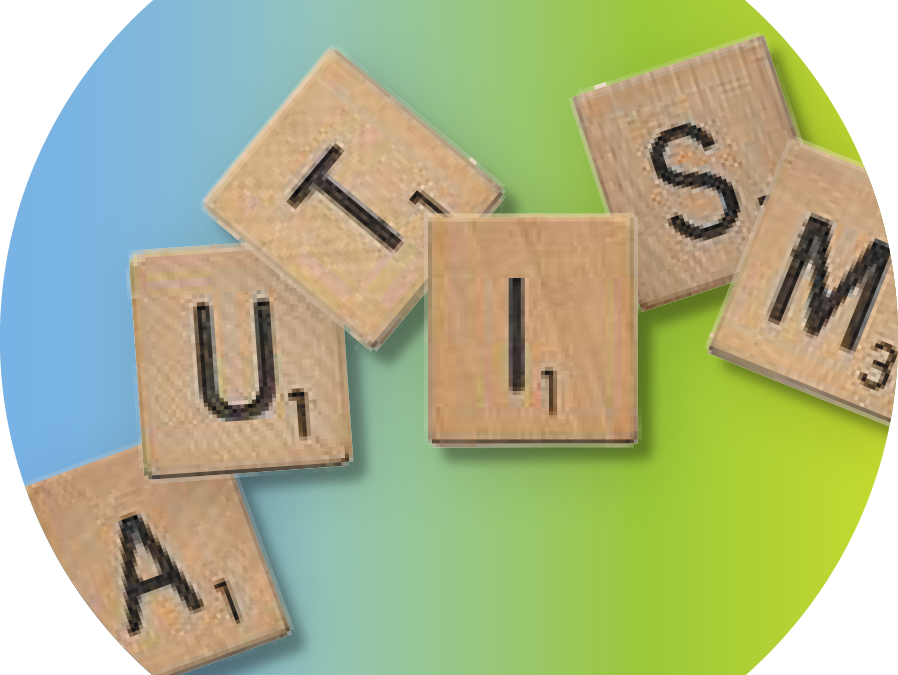
by IABA Team | Oct 31, 2022
Autism has traditionally been diagnosed more frequently in males, but new studies have shown that autism may have nothing to do with sex. The lower prevalence of autism in girls may be due to specific behaviors that indicate autism going unnoticed.
The signs and symptoms of autism do not differ between boys & girls. The way some signs and symptoms of autism can be shown through behaviors, however, can differ.
General Signs of Autism
Before looking at how behaviors that potentially indicate autism may differ between boys and girls, let’s look at some of the general signs of ASD. Signs of general autism normally include:
- Social behavior issues
- Communication issues
- Problems understanding relationships
- A very narrow set of interests and areas of focus
- Stimming (repetitive motor actions and/or sounds)
- Difficulty adapting to change
- Extreme reactions to sensory stimuli
Signs of Autism in Boys
The reason autism diagnoses have been observed at higher levels in boys is that the behaviors most people associate with autism frequently appear in young boys. These signs include:
- Repetitive Actions & Play. Boys with autism are more likely than girls to engage in extremely limited and repetitive actions & play.
- Narrow Fields of Interest. Fields of interest including mechanical or data-driven topics often appeal much more to boys with autism than girls.
- Aggression. Aggression related to autism manifests much more often in boys than in girls.
- Social Unawareness. Boys with autism seem more socially ‘awkward’ than girls with ASD. Younger boys with autism often seem socially withdrawn and uninterested, unlike a larger number of young girls with autism.
Please note that signs of autism can differ greatly from person to person. Some of the signs listed in both of these lists can surface in both boys and girls. These lists are simply to show signs that occur more often when diagnosing autism in young girls & boys.
Signs of Autism in Girls
Some of the criteria used to diagnose autism may go unnoticed by parents or teachers when it comes to girls. These signs can manifest in different ways. Some of the signs of autism that girls exhibit more than boys include:
- Introversion. Girls with autism may be more introverted or be considered to be ‘shy’ than boys. While being introverted doesn’t necessarily mean a girl has autism, being severely introverted may be a warning sign.
- Hyper focusing. Hyper focusing is, broadly speaking, complete absorption into a task. In girls with autism, hyperfocus totally prevents them from dividing attention between more than one thing.
- Lack of social awareness. Another sign that a young girl may have autism is a lack of social awareness. This manifests itself in a girl being unable to establish the relevance or importance of others, leading to a lack of understanding social cues.
- Auditory/Sensory Processing. Severe auditory and other sensory processing sensitivities or issues may also be a sign of autism. This is different than being scared of alarmed due to loud or explosive sounds and more about issues with sounds or sensory stimuli most people take no issue with.
- Social Camouflaging. Social camouflaging can be the most difficult sign of autism in young girls for parents to detect. Young girls with mild autism may go undiagnosed due to seeming socially neurotypical. This makes looking for other signs even more important.
ABA Therapy from IABA Consultants
If you have questions regarding autism treatment, education, or plans to use ABA therapy, we are here for you! Our goal is to make sure no family is turned away due to financial constraints. Our therapy team would love to talk to you. Find the location closest to you and give us a call. We’re here for you.

by IABA Team | Oct 24, 2022
Autism has traditionally been diagnosed more frequently in males, but new studies have shown that autism may have nothing to do with sex. The lower prevalence of autism in girls may be due to specific behaviors that indicate autism going unnoticed.
Let’s take a look at why autism in girls is often overlooked and what those signs are.
Girls & Autism
Why have many signs of autism in girls been overlooked for so long? The short answer is behavioral patterns. While the criteria used to diagnose autism are not different for boys and girls, the way the signs appear may be different.
Signs of general autism normally include:
- Social behavior issues
- Communication issues
- Problems understanding relationships
- A very narrow set of interests and areas of focus
- Stimming (repetitive motor actions and/or sounds)
- Difficulty adapting to change
- Extreme reactions to sensory stimuli
This list is very general and non-specific, but they are related to the criteria used to diagnose autism. The behaviors that show some of these issues, however, can be different for boys & girls.
Signs of Autism in Girls
Some of the criteria used to diagnose autism may go unnoticed by parents or teachers when it comes to girls. These signs can manifest in different ways. Some of the signs of autism that girls exhibit more than boys include:
- Introversion. Girls with autism may be more introverted or be considered to be ‘shy’ than boys. While being introverted doesn’t necessarily mean a girl has autism, being severely introverted may be a warning sign.
- Hyper focusing. Hyper focusing is, broadly speaking, complete absorption into a task. In girls with autism, hyperfocus totally prevents them from dividing attention between more than one thing.
- Lack of social awareness. Another sign that a young girl may have autism is a lack of social awareness. This manifests itself in a girl being unable to establish the relevance or importance of others, leading to a lack of understanding social cues.
- Auditory/Sensory Processing. Severe auditory and other sensory processing sensitivities or issues may also be a sign of autism. This is different than being scared of alarmed due to loud or explosive sounds and more about issues with sounds or sensory stimuli most people take no issue with.
- Social Camouflaging. Social camouflaging can be the most difficult sign of autism in young girls for parents to detect. Young girls with mild autism may go undiagnosed due to seeming socially neurotypical. This makes looking for other signs even more important.
What To Do
If you notice any regular occurrences of irregular behavior, you may want to check in with your child’s pediatrician. A single behavioral issue is usually not enough to seek a medical opinion, but frequent irregular episodes could indicate an evaluation.
Seeking professional medical help is the only way to truly get a proper diagnosis.
ABA Therapy from IABA Consultants
If you have questions regarding autism treatment, education, or plans to use ABA therapy, we are here for you! Our goal is to make sure no family is turned away due to financial constraints. Our therapy team would love to talk to you. Find the location closest to you and give us a call. We’re here for you.

by IABA Team | Jul 12, 2022
Acetaminophen has always been the go-to drug for pain relief during pregnancy. Doctors often prescribed acetaminophen as an OTC drug for mild to moderate headaches due to the low risk associated with pregnancies. The widespread use of acetaminophen for pregnant women in pain, however, may be coming to an end.
Recent research conducted by both university researchers and the US National Institutes of Health links excessive acetaminophen use to autism and ADHD. While the conclusions of the initial studies need additional research for a definitive conclusion, the studies had eye-opening results.
Studying the Effects of Acetaminophen on Pregnancy Risks
A National Institutes of Health-funded study conducted by doctors from Johns Hopkins University called the Boston Birth Cohort Study was used for acetaminophen research. Part of the study examined 24,000 participants, 996 of whom were tested for acetaminophen levels and associated byproducts at birth.
The results of the study on acetaminophen were stunning. Children in the study were checked in on 8.9 years after birth. Of the 996 births, 25.8% had been diagnosed with ADHD, 6.6% had been diagnosed with autism, and 4.2% had been diagnosed with both. This correlates to 2.9X the risk for ADHD and 3.6X the risk of autism (compared to the lowest third of diagnoses in participants).
Researchers in the study noted the results supported earlier research linking acetaminophen to increased autism & ADHD risk during pregnancy. They also noted that future studies will be needed for a definitive conclusion. Some factors not used during the test (health of the mothers, preexisting conditions of the mothers, etc) may also need to be factored in for future research.
Is it Safe to Take Acetaminophen During Pregnancy?
This is definitely a question best left to your doctor. While the answer may be somewhere along the lines of ‘use very sparingly,’ some unanswered questions make this difficult to answer. Researchers and doctors are questioning and studying the impact of acetaminophen and other drugs taken early during pregnancy versus late in pregnancy.
Without conclusive research, there is no ‘recommended dose’ for doctors to prescribe. Talking to your doctor is the only way to get a good answer to this question. Your doctor knows you and your needs better than general internet information ever will. If you are experiencing pregnancy-related pain, please talk to your doctor before taking any OTC medications!
ABA Therapy from IABA Consultants
If you have questions regarding autism treatment, education, or plans to use ABA therapy, we are here for you! Our goal is to make sure no family is turned away due to financial constraints. Our therapy team would love to talk to you. Find the location closest to you and give us a call. We’re here for you.

by IABA Team | Jan 25, 2022
Note: This short article was primarily put together for reference. The actual process for diagnosing ASD is much more complex than just the steps and areas of note published in the DSM-5. Only medically-licensed professionals are able to properly diagnose ASD and any co-occurring conditions. This article is meant for reference use only and is not intended to provide medical advice.
Getting a proper autism (ASD) assessment or diagnosis may seem complicated, but in reality, only a few specialists need to be contacted in order to set up an evaluation. Autism diagnoses can only be given by a select group of medically-licensed professionals. The professions that can give an autism diagnosis include:
- Developmental Pediatricians
- Pediatric Neurologists
- Child Psychiatrists
- Child Psychologists
The American Psychiatric Association Diagnostic and Statistical Manual of Mental Disorders (DSM-5) includes guidelines professionals use to look for signs of ASD.
What is Observed for an Autism Diagnosis
The DSM-5 specifies five areas that need to be evaluated for an ASD diagnosis.
Persistent Deficits in Social Communication and Social Interaction Across Multiple Contexts
The first area observed by doctors looking at a potential ASD diagnosis focuses on social issues. Please note that this is a list for reference–only medically licensed professionals can make a proper diagnosis for ASD. There are a few specific things that need to be carefully observed:
- Deficits in social-emotional reciprocity.
- Abnormal social approaches
- Failure to have a reciprocal conversation
- Lack of sharing interests
- Lack of emotions
- Failure to respond to social queues and interactions
- Deficits in nonverbal communicative behaviors.
- Poor communication (nonverbal and nonverbal in tandem with verbal)
- Lack of eye contact
- Abnormal body language
- Lack of facial expressions
- Unable to interpret gestures
- Deficits in developing, maintaining, and understanding relationships.
- Difficulty adjusting to varying social situations
- Difficulty with play or making friends
- Lack of interest in peers
Restricted, Repetitive Patterns of Behavior, Interests, or Activities
Doctors look for specific patterns or combinations of behaviors, interests, and activities to help guide an autism evaluation.
- Repetitive motor skills, movements, speech, or use of objects.
- Repeated gestures or motions
- Specific, repetitive organization
- Repeated idiosyncrasies
- Insistence on sameness.
- Inflexible to routine changes
- Ritualized patterns
- Rigid thinking or action patterns
- Highly restricted or fixated interests.
- Strong attachments or preoccupations with unusual objects
- Excessive use or focus on a specific object
- Hyperactivity to sensory input.
- Indifference to pain or extreme temperatures
- Adverse reactions to specific sensory stimuli
- Excessive fascination with sensory stimuli
ASD Symptoms Over Time
ASD symptoms must be present in early development but may not manifest fully until social demands exceed limited capacities or are masked by learned strategies later in life. The DSM-5 notes that some symptoms of ASD can only become apparent later in life, as an individual is forced to interact with more of the world. These symptoms alone may not be enough for an ASD diagnosis if no symptoms were present in an individual as a child.
Significant Social Impairments
Records of ASD symptoms causing clinically significant impairment in social, occupational, or other areas of functioning. Medical professionals performing ASD diagnoses will look at social interactions and any impairments. Accepted social queues, communication, and other social stimuli will be used to evaluate.
No Evidence of Intellectual Disability
ASD evaluations must have evidence to rule out other diagnoses of intellectual disabilities. Although ASD frequently occurs alongside other intellectual disabilities, the diagnoses must be made separately. Social factors such as communication are commonly used to differentiate ASD from intellectual disabilities but are not always the case.
Use of Autism Diagnosis Criteria Reference
This short article was primarily put together for reference. The actual process for diagnosing ASD is much more complex than just the steps and areas of note published in the DSM-5. Only medically-licensed professionals are able to properly diagnose ASD and any co-occurring conditions.
The guidelines in the DSM-5 are also useful as a quick reference for things to notice in a young child’s development. Again, only medically-licensed professionals can diagnose ASD, but parents must take note of any developmental abnormalities as a child ages.
ABA Therapy from IABA Consultants
If you have questions regarding autism treatment, education, or plans using ABA therapy, we are here for you! Our goal is to make sure no family is turned away due to financial constraints. Our therapy team would love to talk to you. Find the location closest to you and give us a call. We’re here for you.

by IABA Team | Oct 26, 2021
On the surface, social anxiety disorder and autism spectrum disorder (ASD) may look the same. Both people with autism and those with social anxiety can experience social situations differently than others.
While social anxiety and ASD can occur together, they are very different conditions. In some cases doctors even get the two mixed up, leading to misdiagnosis.
Let’s take a look at both the similarities and differences between ASD and social anxiety.
Similarities of ASD & Social Anxiety
A major similarity between social anxiety disorder and ASD is that both conditions look different in every person. With that said, there are plenty of similarities, including symptoms and treatment services offered. It’s also important to understand that social anxiety is not a form of autism and vice versa.
Similar Symptoms
One reason social anxiety and autism are sometimes confused is that some symptoms appear the same.
According to some educational psychologists, overlapping symptoms of autism and social anxiety disorder can include:
- Limited social communication
- Nervousness
- Difficulty adapting to changing plans
- Lack of eye contact
ASD & Social Anxiety Diagnosis
A psychologist can diagnose autism and/or social anxiety disorder using the Diagnostic and Statistical Manual of Mental Health Disorders 5th Edition (DSM-5). The DSM-5 is a handbook published by the American Psychiatric Association that helps healthcare professionals make diagnoses.
A healthcare professional will ask about symptoms and may observe a person in social situations before making a diagnosis. Sometimes a pediatrician or physician will recommend seeing a healthcare professional who can properly diagnose ASD, social anxiety, or other specific mental conditions. Ask your doctor for more information.
The DSM-5 diagnostic criteria for autism include:
- Persistent differences in social communication, including but not limited to lack of back-and-forth conversations and differences in eye contact
- Repetitive patterns of behaviors, such as lining up toys
- Symptoms were present in early development, even if they went unnoticed
- Symptoms interfere with daily functioning, such as schoolwork
The DSM-5 diagnostic criteria for social anxiety disorder include:
- Fear of judgment in social situations
- Consistent anxiety in social situations that does not fit the context
- Avoidance of social interaction
- Fear of social interaction that impedes day-to-day life
- Having fear for at least 6 months (and the fear cannot be attributed to another mental health condition, such as panic or substance use disorder, or a disease like Parkinson’s)
Note that social anxiety can develop in children or adults.
ASD & Social Anxiety: Brain Functions
The amygdala, which affects the brain’s response to fear, may play a role in both ASD and social anxiety disorder. Research is still ongoing. Ultimately, however, brain functioning is very different in social anxiety and ASD. The neurological causes of autism aren’t yet fully understood.
Treatment for ASD & Social Anxiety
There’s no cure for social anxiety or autism. In addition, not everyone wants to “manage” or “fix” characteristics associated with autism. People can live fulfilling lives with customized support and treatment tailored to their goals.
Treatment and support options for ASD include:
- Applied behavioral analysis (ABA) therapy
- Occupational therapy
- Social skills training
- Cognitive behavioral therapy
- Occupational therapy*
*Occupational therapy is often a first-line service for autism. It may also be used to help people cope with social anxiety in some cases.
High-Functioning Autism Vs. Social Anxiety Disorder
The current diagnostic process for ASD involves three potential levels of support needed:
level 1: requiring some support
level 2: requiring substantial support
level 3: requiring very substantial support
Autism is neurologically based, which makes it different from social anxiety disorder, regardless of communication abilities or any overlap in symptoms.
Differences Between ASD & Social Anxiety
The main difference between ASD and social anxiety is that autism is a neurodevelopmental condition, while social anxiety is a mental health condition. Experts say it’s essential to get the diagnosis correct.
Though a formal diagnosis is best made by a licensed professional, understanding the differences between social anxiety and autism can empower parents to seek an evaluation. Because autism and social anxiety are distinct conditions, they have nuanced symptoms and diagnostic criteria.
ASD & Social Anxiety Symptoms
People with autism and those with social anxiety alike may seem to avoid eye contact. Importantly, however, autistic people aren’t necessarily “avoiding” eye contact out of nervousness or fear. They’re simply not making eye contact in the first place, which is a distinct difference.
Researchers have suggested that individuals with autism look toward a person more slowly, while people with social anxiety look away faster. ASD is a spectrum, meaning people may communicate in different ways. Some may not speak at all, while others may engage in one-sided conversations or miss social cues.
On the other hand, people with social anxiety intentionally avoid conversations because of fear.
Social anxiety can be the result of trauma. A brain dealing with social anxiety may be compensating for something that happened or trying to prevent something from happening reoccurring. Social anxiety is different from autism because autism isn’t triggered by an event, experience, or trauma.
ASD & Social Anxiety Brain Functions
The amygdala may be implicated in both autism and social anxiety disorder, but current research supports the idea that autism is neurodevelopmental. There are comprehensive conclusions available concerning what causes ASD, but research is ongoing.
Social anxiety, on the other hand, is mental-emotional.
Please note that all of this information is for reference only. If you are concerned about your child, please contact your pediatrician or a mental healthcare specialist.
ABA Therapy from IABA Consultants
If you have questions regarding autism treatment, education, or plans using ABA therapy, we are here for you! Our goal is to make sure no family is turned away due to financial constraints. Our therapy team would love to talk to you. Find the location closest to you and give us a call. We’re here for you.
Originally Posted as How to Tell the Difference Between Social Anxiety and Autism at Healthline.com






